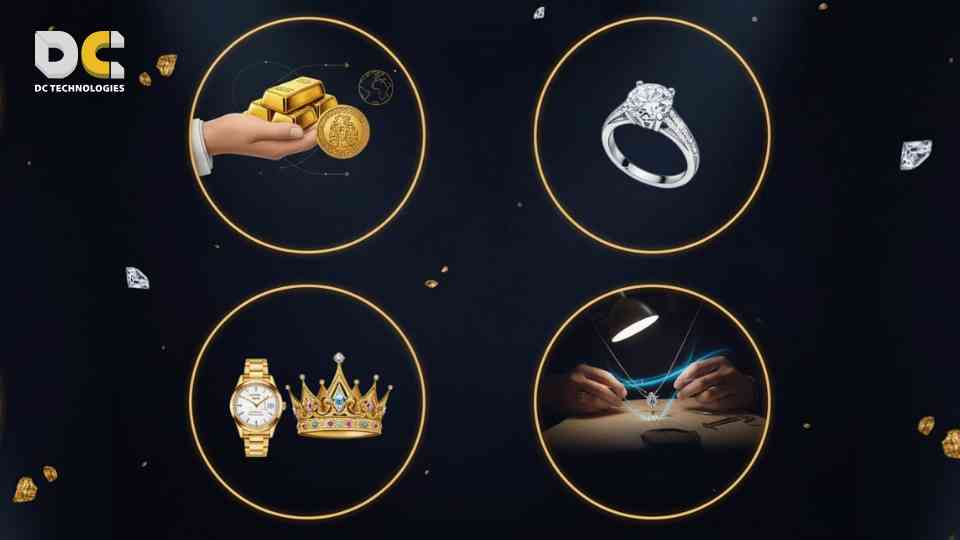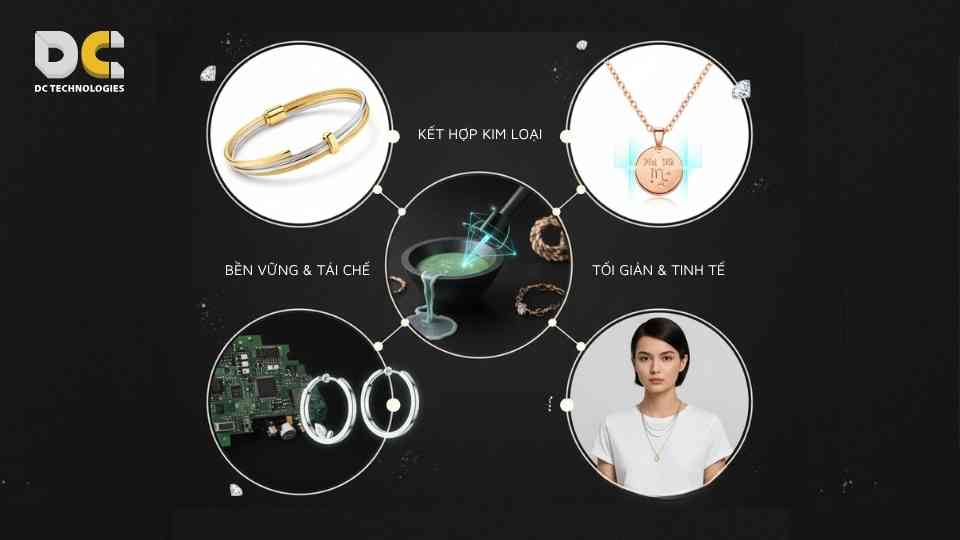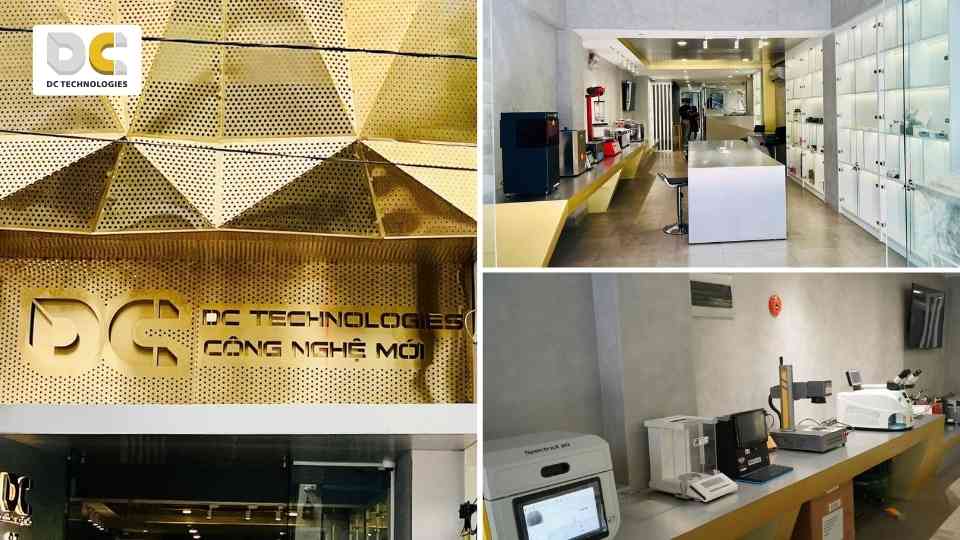Chia sẻ kinh nghiệm
Top 3 Precious Metals in Fine Jewelry Making
Precious metals have always been the foundation of fine jewelry, admired for their rarity, durability, and timeless beauty. More than decorative materials, these noble metals symbolize wealth, culture, and personal identity. In the world of luxury jewelry, the choice of metal is just as important as gemstones, influencing both value and design. This article explores the top 3 precious metals—gold, platinum, and silver—and reveals their unique strengths, applications, and trends in modern jewelry.
I. The Role of Precious Metals in Jewelry

The Role of Precious Metals in Jewelry Making
The value of jewelry comes not only from gemstones but also from the choice of metal. Precious metals are prized because they resist corrosion, maintain shine, and carry significant financial and symbolic worth. Throughout history, they have been associated with power, love, and wealth. In fine jewelry making, selecting the right metal is crucial to ensure durability, elegance, and long-term investment value.
II. Top 3 Precious Metals in High-End Jewelry
1. Gold, The Eternal Symbol
Gold has been at the heart of human civilization for thousands of years. Its malleability, warm glow, and resistance to tarnish make it indispensable in gold jewelry collections.
- Advantages: Easy to shape, available in various shades—yellow, white, rose—to suit different styles. Strong financial value and considered a safe-haven asset.
- Disadvantages: Pure 24K gold is soft and less durable; therefore, 18K or 14K alloys are used for greater strength, though at lower purity.
- Applications: Wedding bands, investment jewelry, necklaces, and modern accessories. Rose gold and white gold are especially popular among younger generations.
2. Platinum, Absolute Luxury
Among all precious metals, platinum is the rarest and most exclusive. Its natural white color and exceptional durability make it the ultimate symbol of prestige.
- Advantages: Extremely hard and long-lasting, does not fade or tarnish. Its rarity and purity make it the ultimate choice for luxury jewelry.
- Disadvantages: Heavier and harder to craft than gold, requiring advanced techniques. Its higher price makes it less accessible to mass consumers.
- Applications: Engagement rings, wedding bands, and iconic luxury collections where strength and exclusivity matter most.
3. Silver, Elegant and Accessible
Silver has long been associated with elegance and affordability. In today’s market, silver jewelry is especially favored by younger customers seeking trendy designs.
- Advantages: Affordable, versatile, and easy to craft into creative shapes. Bright and reflective, perfect for modern minimalism.
- Disadvantages: More prone to tarnishing and scratches compared to other precious metals; requires regular care.
- Applications: Everyday jewelry, earrings, bracelets, and fashion-forward pieces. Sterling silver combined with gemstones is a rising trend in contemporary jewelry.
III. Comparing Gold, Platinum, and Silver in Jewelry Making

Comparison of Gold, Platinum, and Silver in Jewelry Making
Each of these precious metals offers different values. Gold symbolizes tradition and versatility, platinum represents exclusivity and strength, while silver combines youthful elegance with affordability. The right choice depends on lifestyle, budget, and personal preference.
>> See also: Metals More Precious Than Gold? Top 5 Most Valuable Metals in the World
IV. Detailed Comparison of the 3 Precious Metals
When comparing precious metals in fine jewelry, it is necessary to evaluate them across multiple dimensions—durability, economic value, aesthetics, and suitability for different consumer segments.
1. Durability
Among the three, platinum is considered the most durable. Its density and hardness make it resistant to scratches and bending, ensuring long-lasting jewelry pieces such as engagement rings. Gold, while strong, depends on purity: 24K gold is too soft for daily wear, while 18K and 14K alloys balance beauty with strength. Silver, though beautiful, is less resistant to wear and tarnishes easily, requiring regular maintenance.
2. Economic Value
From an investment perspective, gold is the most liquid and widely recognized, often serving as a hedge against inflation. Platinum, rarer than gold, carries higher prestige but its price is more volatile, influenced by industrial demand. Silver remains affordable and accessible, making it suitable for mass-market jewelry, though it does not carry the same long-term investment appeal.
3. Aesthetic Value
Each metal has its own visual identity. Gold reflects tradition and prosperity, available in yellow, white, and rose to suit diverse tastes. Platinum exudes refined elegance with its natural white sheen, often chosen for luxury designs. Silver represents youth and versatility, perfect for minimalist or fashionable jewelry at an affordable price point.
4. Consumer Psychology
Customer preference for these precious metals varies. Couples often choose platinum for symbolic, long-lasting wedding rings. Traditional buyers still favor gold for cultural and financial reasons. Younger generations, particularly Gen Z, embrace silver for its affordability and trendy look. These choices reflect both lifestyle and emotional value attached to the metals.
5. Applications in Jewelry
- Popular for wedding bands, investment jewelry, and versatile accessories.
- Platinum: Reserved for high-value collections, gemstone settings, and premium engagement rings.
- Silver: Common in daily wear, fashion jewelry, and creative, affordable designs.
Overall, while all three precious metals share beauty and value, their differences in durability, price, and perception allow jewelers to meet a wide range of consumer needs.
V. Customer Psychology and Market Trends
The jewelry industry in 2025 reflects changing consumer preferences. Shoppers now seek creative blends of gold, silver, and platinum in a single design. Personalized jewelry, such as engraved rings or pendants, is rising in popularity. Sustainability also plays a major role, with recycled precious metals gaining recognition in eco-friendly fashion. Minimalist yet refined styles dominate, showing that today’s buyers value versatility and responsible sourcing as much as beauty.
>> See also: Precious Metals in Jewelry Production: Key Trends 2025
VI. DC Technology – Over 25 Years of Jewelry Expertise

DC Technologies
With more than 25 years of experience, DC Technology is a trusted provider of precious metals, industrial materials, and professional jewelry equipment. Our portfolio includes raw metals for jewelry crafting, advanced testing instruments, and laboratory solutions for quality control.
Why DC Technology?
- 100% genuine products.
- Official warranty and technical support.
- Free training and installation.
- Professional local service team in Vietnam.
- Flexible installment and payment plans.
In 2025, as demand for precious metals continues to expand, partnering with DC Technology ensures competitiveness, efficiency, and long-term customer trust.
Contact DC Technology today for consultation and exclusive offers!
Website: https://dctech.com.vn/
Hotline: 0908727235
Showroom: 87 Nghĩa Thục, An Đông Ward, Ho Chi Minh City
Tech Center: 4th Floor, HUTECH Building, Hi-Tech Park, Thu Duc City
Hanoi Office: 22B Ơ2 Linh Đàm Peninsula, Hoang Liet Ward, Hanoi
